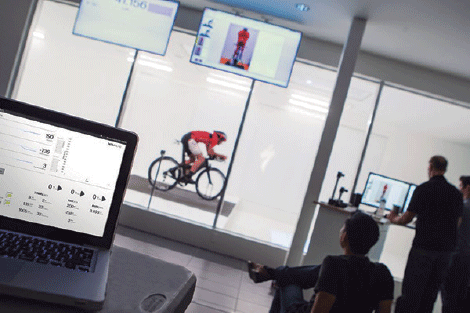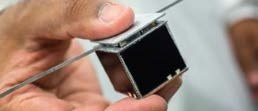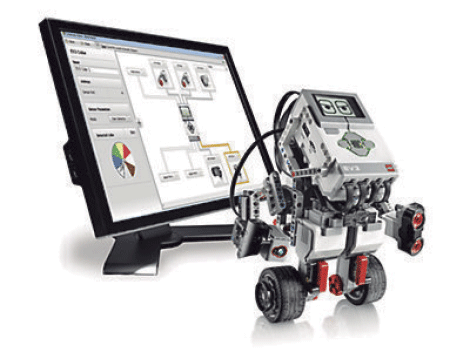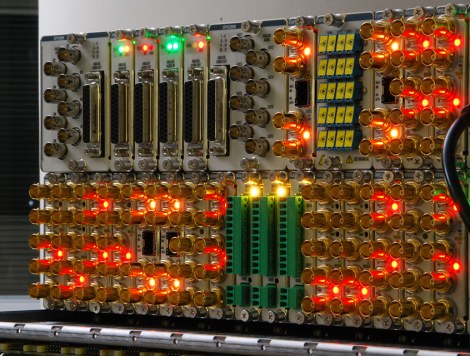Observing sports and teaching engineering
I look at sports in a different way. Rather than marvel at Ray Allen's near-mathematically perfect jumper, I'm curious to see if there are possible ways to get offensive schemes more often through predictive path planning. To me, a baseball play not only means that the batter hits the ball in such a way that it allows him to make a complete circuit between the bases and win a run without taking the ball out of the park, but it also involves an enormous amount of data that is They can be used for anything from designing strong new stadium walls to analyzing how baseball bats will react in different climates. When I look at sports, I see science, physics, and a unique way to engage the next generation of engineering students.
Historically, sport has not been associated with science and engineering, but in recent years the sports industry has invested more time and money in incorporating technology into athletics. This includes everything from designing equipment to improve its durability and performance; biometric research on the health and safety of athletes and even the psychology of “groupthink” and other behavioral studies. In the end, the coach, the physical trainer, the team and the individual athlete are looking for a competitive advantage and the technology of the sport can provide it; But what does this mean for the engineers supporting the athletes' efforts?
Data is everywhere. Every game, every breath, and every piece of grass can be captured, analyzed, and used to make important decisions that can mean the difference between victory and defeat. Patterns and predictive algorithms now complement plyometrics and supplements as part of the equation that is today's sport. Today's sports teams now rely on brains as much as brawn. The development of safer equipment to prevent injuries is as important as the technologies and drugs used for rehabilitation. Positioning the right people in a lineup is just as valuable as raw talent, and all of this is made possible by science, technology, and analytics. The casual fan may have heard of QBR or Quarterback Ranking (a qualitative measure of a quarterback's performance and a way to compare quarterbacks against each other on an independent scale), but a quick check on ESPN Stats.com will reveal algorithmic comparisons. advances that could make a Harvard statistician blush.
Sports science has also found its way into popular culture. Due to TV shows, movies and books now at the top of best-seller lists and thanks to the popularity of shows like ESPN's “Sports Science”; the hundreds of mobile apps that can track your own fitness goals and personal training devices like the Adidas miCoach or the Nike Fuel Band; it's fair to say that technology has become a vital part of the game; but what can it teach us? If you've been following the recent news, it's no secret that there is a lack of students enrolling in science, technology, engineering, and math (STEM) programs and pursuing careers in these fields. The US is losing the battle to inspire students to see STEM exciting or close. In turn, we are graduating students at a rate that is well below current and future industry demands, even as careers that require STEM skills continue to grow. This is where sports technology becomes more than just a part of the game.
Getting students to associate STEM education with something they know and care about, like sports, is essential not only for their engagement in the classroom, but for giving a real-world context to otherwise complex ideas. or abstract. For example, instead of teaching the concept of slowing down due to weather conditions, take the class outside of the classroom and have them run in the wind. Try using the swim gear to show aerodynamic drag, and have them investigate inelastic collisions by watching a professional soccer game. Students of all ages become more interested in STEM when it is presented in a way that almost resembles recess. At National Instruments (NI), we create the hardware and software tools engineers use to design systems. Everything from smartphones to medical devices and even spacecraft have been built and tested using our tools; including sports technology.
By using our products, engineers of all stripes are able to accelerate their innovation and discovery. For example, in 2013, NI partnered with Specialized Bicycle Components to build the world's first custom wind tunnel used in the sport to test prototypes and sponsored athletes. Cycling is a sport in which a few seconds often dictate who gets on the podium; therefore, it is essential to understand and optimize every factor that affects the rider's body and the bike at all stages of the race. We've helped Specialized create an accurate way to measure and evaluate the real-world effects of aerodynamic drag on their bikes and riders, and by doing so, Specialized can continue to more quickly develop safer bikes and help athletes race more efficiently. smarter and more efficient. Better yet, the innovations discovered here not only give Specialized athletes a competitive edge, but will make the daily bike commute from home to work quicker and easier. Projects like this are not only technically challenging and benefit many people, but provide a real-world example to students that answers the question, “When am I going to use this?
For the past several years, my role at NI has been to put these same technologies in the hands of undergraduate students across the country in an effort to familiarize them with our products before they graduate and become professional engineers. I am responsible for students not only understanding complex engineering concepts, but also creating projects and actually “doing Engineering” before graduation. I have found that the actual topic of the project rarely matters as long as students gain an understanding of the practical applications of what they learn in the classroom.
During the last semesters, I have worked with students from various universities to develop different engineering projects that demonstrate sports science concepts. One of the first projects and the most popular example was a swimming study I did in 2011 with a group of mechanical engineering students from the University of Texas. The team was challenged to design and create a training platform that the swimmers could use to investigate their reaction rates and body position upon entering the water. This project was very successful, not only for the students, but also for NI, who estimated that students had achieved a 200% increase in understanding of our hardware and software over previous semesters with different projects and technologies.
Since the UT project, I have gone on to sponsor over 20 teams and over 100 students in sports technology projects and faculty across the country have quickly realized its effectiveness. Now I have more interest in my “Qualitative Free-Throw Analysis” projects than in some of the more traditional academic offerings. These teams have done everything from underwater swimming analysis to eye tracking, and the quality of the final product is exceptional. These students go on to become professional engineers and scientists in various fields, ranging from computer science to biochemistry. The tools, experience, and knowledge that these students possess is something that will help them in whatever adventure they pursue in the future. They understand engineering because it has been presented to them in a digestible way that they can relate to, through the sport. Engineering is not a rocket science, it is the science of sports.







